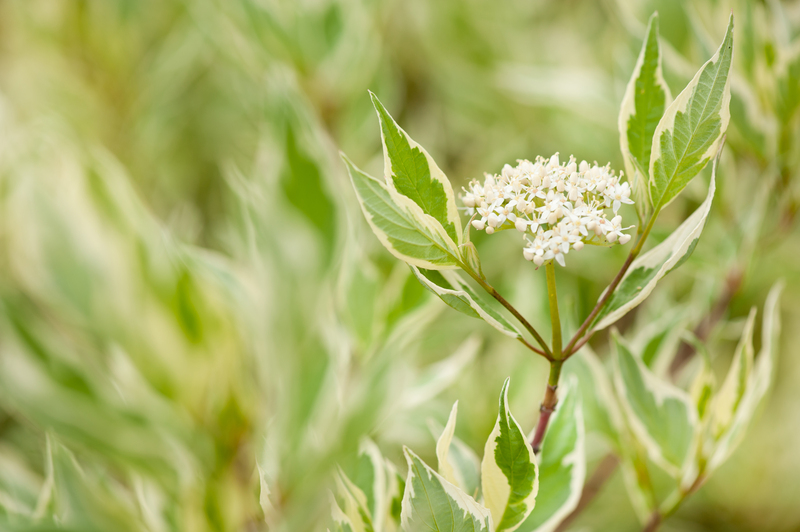The Art of Vertical Gardening for Beginners
Posted on 22/06/2025
The Art of Vertical Gardening for Beginners
Vertical gardening is revolutionizing the way we grow plants, especially in urban environments where space is often at a premium. Perfect for small patios, balconies, or even indoor spaces, vertical gardens are not just practical, but also incredibly beautiful. Whether you're an aspiring urban farmer or a lover of greenery with a creative flair, the art of vertical gardening holds endless possibilities for both beginners and seasoned gardeners alike.
What is Vertical Gardening?
Vertical gardening refers to growing plants upward instead of outward. Plants are cultivated on walls, trellises, stacked shelves, towers, or any other structure that facilitates upward growth. This modern gardening trend is ideal for those looking to maximize limited space and incorporate lush greenery into tight areas.
Vertical gardening for beginners is all about harnessing unused vertical spaces to create living walls, hanging gardens, and decorative trellis arrangements. With its vivid appeal and multiple benefits, more and more homeowners and apartment dwellers are adopting this innovative approach.

Key Benefits of Vertical Gardening
- Space Efficiency: Grow more in less horizontal space by utilizing vertical surfaces inside or outside your home.
- Improved Air Quality: Plants help filter pollutants, contributing to healthier air indoors and out.
- Aesthetic Appeal: Transform bland walls and fences into stunning live art.
- Pest and Disease Management: Vertical positioning can prevent ground-based pests and reduce the risk of soil-borne diseases.
- Accessibility: Gardeners with mobility challenges can more easily tend to plants raised at eye or chest height.
- Better Yield: Certain crops grow more abundantly when provided vertical support, increasing your harvest from the same square footage.
Vertical Gardening Ideas for Small Spaces
Even with the tiniest balcony, vertical gardening opens new horizons. Here are some popular vertical garden ideas for beginners:
- Wall-Mounted Planters: Attach pots or modular planters to a bare wall for a living mosaic effect.
- Pallet Gardens: Repurpose wooden pallets as rustic vertical plant holders.
- Hanging Pocket Organizers: Use canvas pockets designed for plants or upcycle shoe organizers for herbs and flowers.
- Trellis Systems: Install a lattice or trellis for climbers like peas, beans, or even flowering vines.
- Stacked Containers: Arrange pots or crates in a pyramid or staggered formation for a tiered effect.
- Garden Towers: Purchase specialized towers designed for stacking individual plant pockets or use affordable PVC pipes as do-it-yourself solutions.
Choosing the Right Plants for Your Vertical Garden
Not every plant is ideal for growing vertically. When starting a vertical garden for beginners, choose varieties that suit your climate, sunlight, and space. Consider a mix of the following:
Vegetables and Herbs
- Leafy greens: lettuce, spinach, kale, Swiss chard
- Herbs: basil, oregano, thyme, mint, parsley
- Fruit-bearing climbers: tomatoes, cucumbers, pole beans, peas
- Strawberries: Perfect for pots, hanging baskets, or vertical towers
Flowers and Ornamentals
- Petunias, nasturtiums, trailing lobelia: Provide cascading color
- Morning glories, clematis: Ideal for trellises and railings
Indoor-Friendly Plants
- Pothos, philodendron, ferns: Thrive in hanging or mounted arrangements
- Air plants (Tillandsia): Require no soil, attach directly to surfaces
Tip: Always match the plant's light and water needs with your chosen location. Group plants with similar requirements together for added convenience.
Designing Your Vertical Garden: Planning and Placement
Proper planning is the cornerstone of any successful vertical gardening project. Here's how to design a flourishing vertical display:
- Analyze your space: Is it outdoors, on a balcony, or indoors? Check the sunlight exposure throughout the day.
- Decide on structure: Will you use shelves, trellises, hanging pockets, or something else?
- Select an irrigation method: Drip systems work well for large wall gardens, while hand-watering is fine for smaller setups.
- Plan plant arrangement: Place fast-growing climbers on lower levels so they don't overshadow smaller plants above.
- Consider aesthetics: Use a mix of colors and textures for visual impact. Alternate cascading and upright growth forms.
DIY Vertical Garden Structures for Beginners
- Recycled pallet gardens: Line the back and bottom of a wooden pallet with landscape fabric, fill with soil, and tuck plants into the slats.
- Hanging gutter gardens: Attach painted rain gutters to a wall and fill with shallow-rooted greens, herbs, or flowers.
- Old shoe organizer garden: Hang a canvas shoe organizer, fill pockets with soil, and plant herbs and small veggies.
- Wire mesh wall garden: Secure mesh to a wooden frame and use clip-on pots or hangers for an inexpensive modular system.
How to Build Your First Vertical Garden - Step-by-Step Guide
Ready to get growing? Below is a straightforward process for vertical gardening for beginners:
- Choose your location: Select a spot with the right amount of sunlight and shelter from strong winds.
- Gather materials: Depending on your method, this could include planters, pallets, trellises, nails, screws, potting soil, and your chosen plants.
- Prepare the structure: Securely mount or assemble your vertical system to ensure it can support the weight of soil and plants. Waterproof indoor walls if necessary to prevent damage.
- Add soil and irrigation: Use a high-quality, lightweight potting mix (avoid garden soil which can be too heavy). Install a drip irrigation system or set up a reliable watering routine.
- Plant thoughtfully: Place trailing or vining varieties in higher positions and compact growers lower down. Water thoroughly after planting to settle roots.
- Maintain regularly: Check for signs of pests, water shortages, and nutrient deficiencies. Prune back excessive growth and remove dead leaves to keep your garden healthy.
Essential Tools and Supplies for Starting Vertical Gardening
Setting up a successful vertical garden for beginners is easier with these essential tools:
- Quality planters and containers: Modular wall-mounted planters, hanging baskets, gutters, pallets, or felt pockets
- Lightweight potting mix: Specialized for container gardens to retain moisture and nutrients
- Fertilizers: Slow-release granules or liquid feeds to support healthy growth
- Watering can, hose, or drip system: Frequent, gentle watering is crucial for vertical arrangements
- Basic hand tools: Trowel, pruners, and gloves
- Mounting hardware: Hooks, screws, anchors, and weather-resistant ties or wires
Watering and Maintenance Tips for Vertical Gardens
Consistent care is vital for the health of your vertical plants. Keep these vertical gardening maintenance tips in mind:
- Monitor moisture: Vertical systems often dry out faster; check daily during hot spells.
- Water from the top: Gravity helps distribute water downwards, but be sure every level gets adequate moisture.
- Fertilize regularly: Container-grown plants need more feeding--use a diluted, balanced fertilizer biweekly during the growing season.
- Rotate for even light: If possible, rotate movable structures to prevent plants from leaning toward sunlight.
- Watch for pests: Inspect regularly for aphids, spider mites, and slugs.
- Support heavy plants: Train vines and climbers to supports; add ties as needed to prevent stems from snapping.
Common Mistakes to Avoid in Vertical Gardening
Vertical gardening for beginners is forgiving, but some common pitfalls should be avoided for best results:
- Overcrowding: Plants need room for roots and air circulation. Overcrowding leads to poor growth and disease.
- Inadequate watering: Skipping daily checks can result in dry, stressed plants. Set reminders or install automated systems.
- Wrong plant choices: Selecting sun-loving plants for shady spots (and vice versa) limits success. Match your environment to plant needs.
- Neglecting drainange: Ensure planters have drainage holes to avoid root rot.
- Weak structures: Avoid top-heavy, unbalanced arrangements--secure your setup to prevent falls and breaks.
Creative Ideas to Personalize Your Vertical Garden
With a touch of imagination, your beginner's vertical garden can become a unique green masterpiece. Here's how:
- Mix edible and ornamental plants: Intermingle lettuce and pansies or herbs and succulents for beauty and bounty.
- Create patterns: Arrange colored flowers in stripes or geometric shapes on your wall.
- Artistic containers: Use painted cans, teacups, or recycled bottles for a creative, eco-friendly display.
- Themed gardens: Build a pizza garden (basil, oregano, tomato) or a butterfly garden (nectar-rich blooms, milkweed).

Vertical Gardening Frequently Asked Questions
Do vertical gardens need special soil?
Yes, use a lightweight, well-draining potting mix. Heavier garden soils may compact and hinder proper drainage.
How much sunlight do I need?
It depends on your plant choices. Most edibles and flowers need at least 6 hours of direct sun, while shade-loving plants can thrive on north-facing walls or indoors.
Can I use vertical gardening indoors?
Absolutely! Use compatible indoor plants like ferns, pothos, or herbs in a well-lit room, and ensure good air circulation.
How do I water a living wall or vertical garden?
For large wall systems, a drip irrigation setup is effective. Smaller projects can be hand-watered, taking care to moisten all levels. Always allow for drainage.
Conclusion: Start Your Vertical Gardening Journey Today
The art of vertical gardening for beginners is a rewarding way to transform even the smallest space into a vibrant oasis. By choosing the right plants, using innovative structures, and providing attentive care, anyone can enjoy an abundant and beautiful vertical garden.
With a little creativity and consistent effort, you'll not only enjoy fresh air, homegrown produce, and blooming flowers year-round but also contribute positively to your environment. Why not start your own vertical gardening project today and explore a world of vertical beauty?
Happy gardening!
